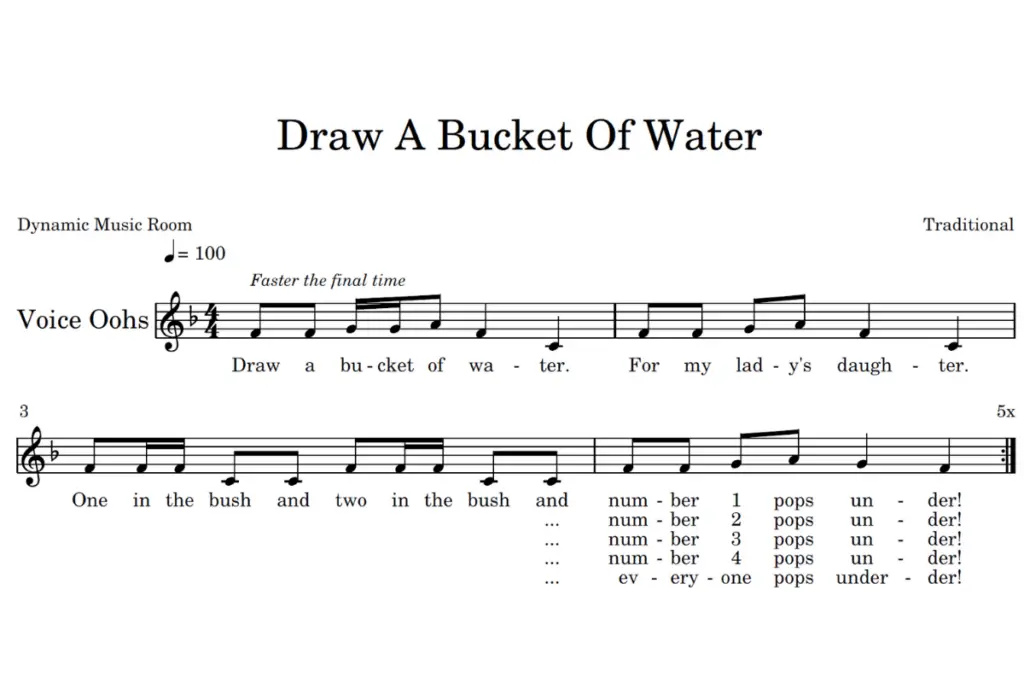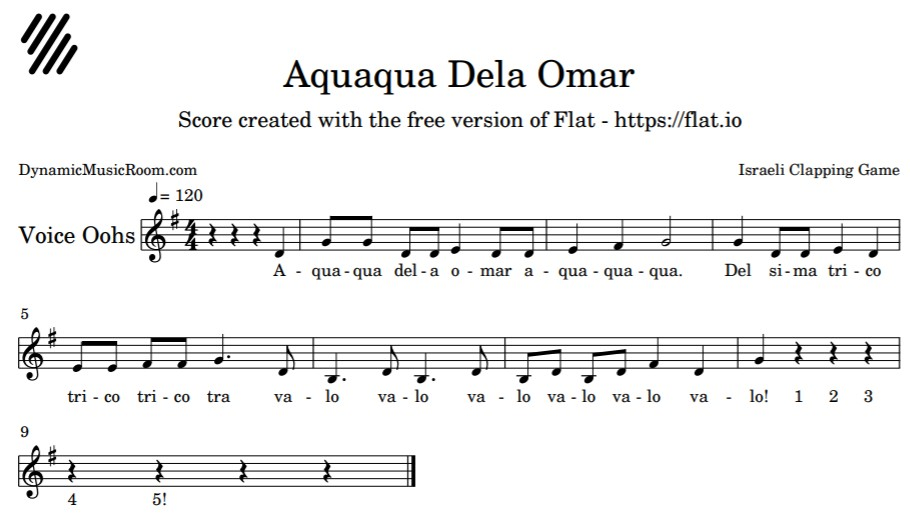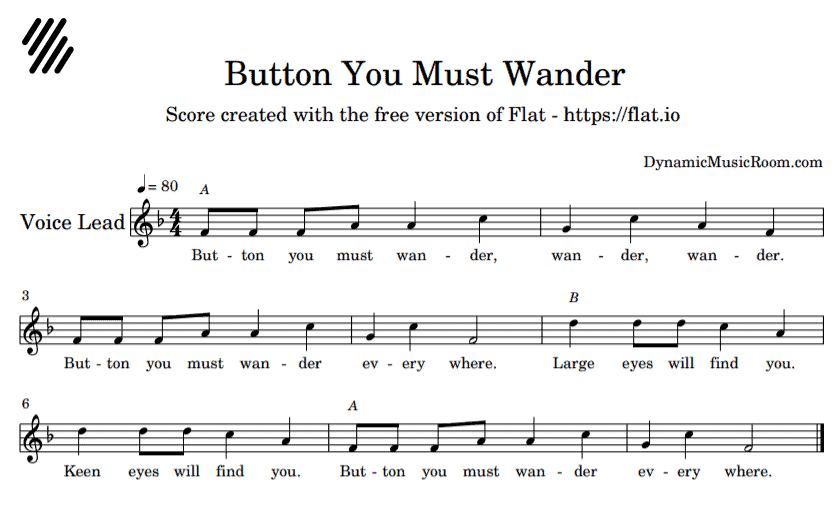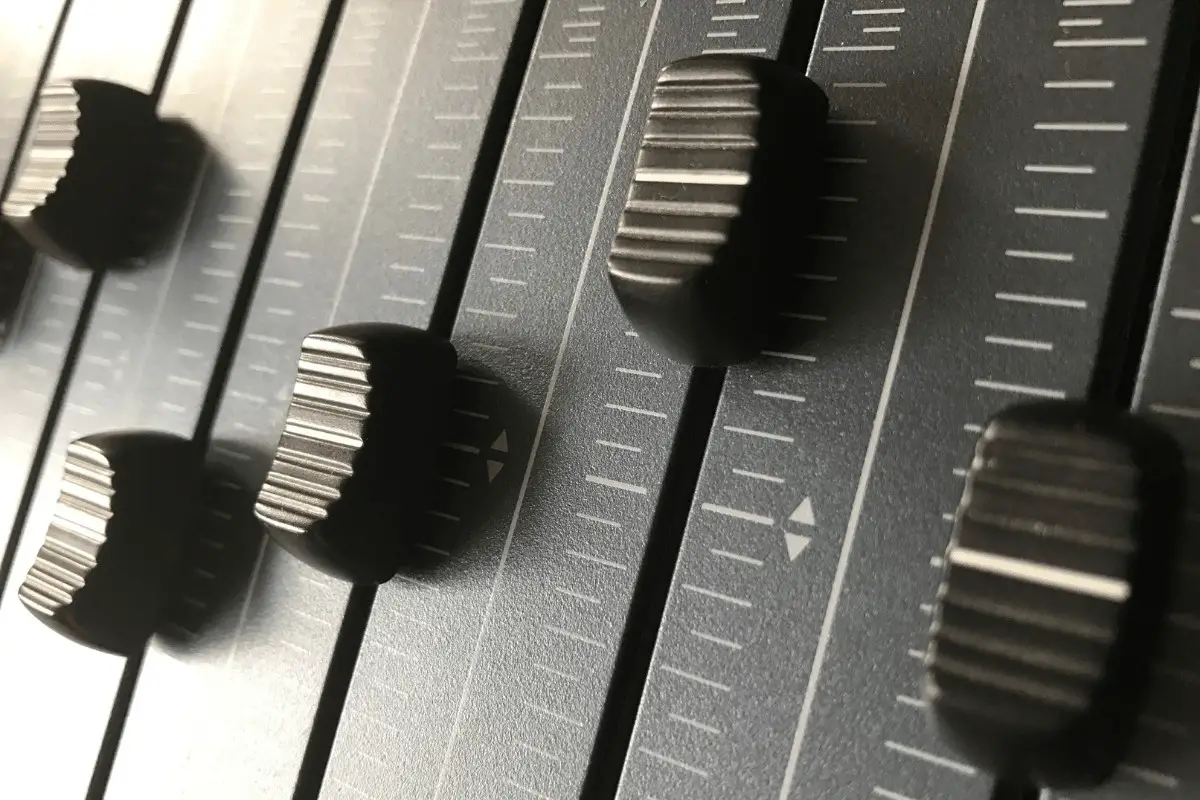For a new (and experienced) music teacher, there’s always a time in the year when you’re just kind of looking for something new to teach in your fourth-grade music class.
It’s not that you can’t come up with your own or you don’t have a great repertoire to pull from; we all want a time when we just take some ideas from others to shake it up a little.
With this in mind, this article will focus on 9 of my favorite 4th-grade music lesson plans for you to steal without guilt!
Take it and use it in your classroom. Let’s dive in!
Table of Contents
#1 Draw A Bucket Of Water
I love this song and gam, and it’s one of my go-to’s for the 4th grade. It teaches great sixteenth note concepts, has a catchy melody and uses a super fun movement game.
For this song, I’ve done it successfully in fifth grade and third grade, but I find conceptually and coordination-wise, it seems to fit best in the fourth-grade music class.
Many music teachers know this one, but if you don’t, here’s the notation for the folk song:

Directions
To play this game, students need to be in a small circle of four people. Each student needs to be given a number, either 1, 2, 3, or 4.
In the circle, partners 1 and 3 are across from one another, and 2 and 4 are across from each other.
All partners take hands with their partners. 1 and 3’s hands are on the bottom of 2 and 4’s hands. It makes a sort of tic-tac-toe pattern.
During each verse of the song, the circle rocks back and forth to the beat. At the end of the first verse, where it says “…number 1 pops under,” the person number 1 puts their head under the arm of 2 and 4 in front of them.
Their arm rests on the shoulder of number 1.
Now, we repeat with number 2 on the second verse. This continues with each person going under until we’ve formed a tight woven circle.
In the last verse, they jump to the right as the tempo of the song goes much faster. At the end of the song, they all fall down.
Kids love this song and game once they get it, but it takes a bit at first. If your students are reluctant to take hands, consider using scarves or rhythm sticks to hold to make the circle bigger so they don’t have to touch each other.
This song also lends itself to some great rhythm activities.
#2 Aquaqua Dela Omar
This is a game first collected in Israel, and it’s an elimination game, which is always a favorite at this age group.
For this game, students sit in a circle, both palms up on their knees. Their right-hand rests in their neighbors left hand.
As they sing the song, one student starts the clap on the steady beat by reaching their right hand over to clap the right hand of the neighbor whose hand is resting on their left hand.
It sounds a lot less complicated than I’m explaining it; trust me!
On the number 5 at the end of the song, whoever’s hand is last clapped is out. They leave the circle, and the game begins again.
Advanced version: I allow the person who is on the last beat to pull their hand out of the way to “stick” the person in front of them. The rule, though, is that they have to pull it out only right before the beat occurs. If they pull too early, they’re still out.
This folk song is great for teaching dotted quarter notes and eighth notes as well as low ti for those who like teaching in sequences.
Here’s the musical notation:

#3 Alabama Gal
I can’t get over how much I love folk dances, and if you’ve ever tried teaching them, you probably love it too.
Alabama Gal is one of the more popular and simple ones out there. I find it’s perfect for the start of fourth grade and sets the stage for more complex folk dances later on.
But this one is simple to do with the third grade as well; I just usually save it until the beginning of fourth-grade music.
This folk dance is more like a play party in that it also uses a song.
Directions
Students are in longways or longwise sets. This means there are two lines of students facing each other, with the partner being across from one another.
It works best when there are four partners in each set, but it can be done in one giant set too.
Each move goes with a verse. Here are the moves:
- Head partners take hands and jump to the end of the set and back over the verse while other students clap.
- Right arm swings 2x with your partner, coming back to your same spot on the words “Alabama Gal.”
- Over the last two verses, students face down their lines to the front. Lead students turn out and go to the end of the line with others following. At the end of the set, the head students put their arms up to form an arch. All other students pass through and make another set of lines with the second set of partners as the new head.
Then you just keep repeating until everyone has had a turn as the leader.
This video may serve to help you if you’re more of a visual learner.
#4 The Colorado Trail
This is a beautiful melody and one your students probably won’t want to sing at first.
It’s one of those awesome songs that aren’t immediately flashy or cool. There’s no game, but you can add instruments if you wish.
If your relationship with your students is new, I wouldn’t advise this one. However, if you’ve had them for a bit, and they’ve learned how to enjoy or at least give all music a chance, then it’s great.
I was skeptical of this song at first, too, but when I had my fourth graders learn it and perform a version of it for a concert, they bought into it 100%.
The parents and staff thought it was beautiful and moving. On a concert filled with other fun and favorite songs, games, simple songs, and goofy stuff, it was the perfect breath of fresh air.
Check out the sheet music at the Kodaly Folk Song Collection.
#5 Follow The Drinking Gourd
Yes, Follow The Drinking Gourd isn’t an authentic song from the Underground Railroad, but it is steeped in the folklore of the time, and it was a popular song during the Civil Rights Movement.
Read more about the true story of Follow The Drinking Gourd.
There are several book versions of the story and song, and one was even featured on Reading Rainbow. Here’s where the book starts on the show:
From a world perspective, it’s important to raise awareness about our past tragedies in America, and this book provides a good way to do so.
From a musical perspective, this is a beautiful call and response minor melody. It goes well with Orff musical instruments playing the pentatonic minor.
Check out the Drinking Gourd book here on Amazon. The sheet music’s included with the book as well.
#6 Tuning Fork Madness
In fourth grade, students discuss the science of waves and specifically sound waves, at least in Michigan as of this writing.
This is the perfect time to play around with the tuning fork!
I’ve collected several tuning forks over the years, enough for one fork per small group of 3-4 kids in each classroom.
I love to facilitate a lesson on tuning forks, sound waves, and experimentation.
Usually, I start with a video such as the one below that talks about how they work. Then, I turn them loose with these simple questions:
- What makes the strongest sound with the tuning fork?
- How can you test your hypothesis?
- What did you learn about sound from this experiment?
I know it’s not super specific, but sometimes I think it’s good to be vague and allow them to come up with their own thoughts.
Here’s one video I like to show as a supplement (or I do the experiment in person!):
Each time I do this, we end up with a slightly different set of experiments, but we end up learning a ton, and the students have a ball!
#7 Old Joe Clark
Old Joe Clark is a silly song with a bunch of made-up verses. I love to teach this song with some made-up accompaniment on the part of the students.
My favorite part of this lesson, though, comes from making up new lyrics.
After we analyze how the rhyming structure of the song works and model the new lyric process, I split the students into groups of 3-4 to come up with their own.
Some groups will get it right away, while others require a bit of help.
Pro-tip: For those that need help, give them a starting part of the verse and guide them through the brainstorming process a bit more.
For notation, check out our Old Joe Clark recorder guide.
Here are some sample lyrics already made up in the original:
Old Joe Clark he had a wife; her name was Betty Lou.
She had two great big brown eyes; the other two were blue.
——
Old Joe Clark he built he had a house, invite me to supper.
Then he hit me with a table leg and stuck my nose in the butter.
#8 Recorder Mashups
I love the recorder. Yes, I’m weird. I think it’s a cool and awesome instrument for reinforcing musical concepts, developing the ear, building coordination, and developing breath control.
That said, halfway through fourth grade, I love to put the recorder together in some part-work by mashing it up with songs, playing in canon, or at thirds.
Depending on if and when you start the recorder, you may end up having them get bored of the same old same old playing.
This is where the mashups and harmony come into play.
I go into this in a lot more detail on my Hot Cross Buns in 5 harmonic ways video from my YouTube channel. Check it out.
It’s possible to even do this with pop music you learn on the recorder!
#9 Button You Must Wander
Of course, if you just want to relax and play a fun game with catchy singing games, Button You Must Wander is an excellent choice for a 4th-grade music lesson.
The song features important but basic rhythms, such as quarter note, eighth note, and half note.
It also covers the pentatonic scale using Do, Re, Mi, Sol, and La.
The game is a “finding game.” It goes like this:
One student is the finder. They sit in the front of the class with their eyes closed.
One student is the hider. They take an object or “button” and hide it somewhere in the room. All other students watch this.
The hider sits down, and the finder opens their eyes. The now must move around the room to find the button or other object.
The rest of the class sings the song, and when the finder gets closer, they sing louder. When the finder gets farther away, they sing softer.
It’s like Hot and Cold, but with dynamics!
Here’s the notation. Happy teaching!


